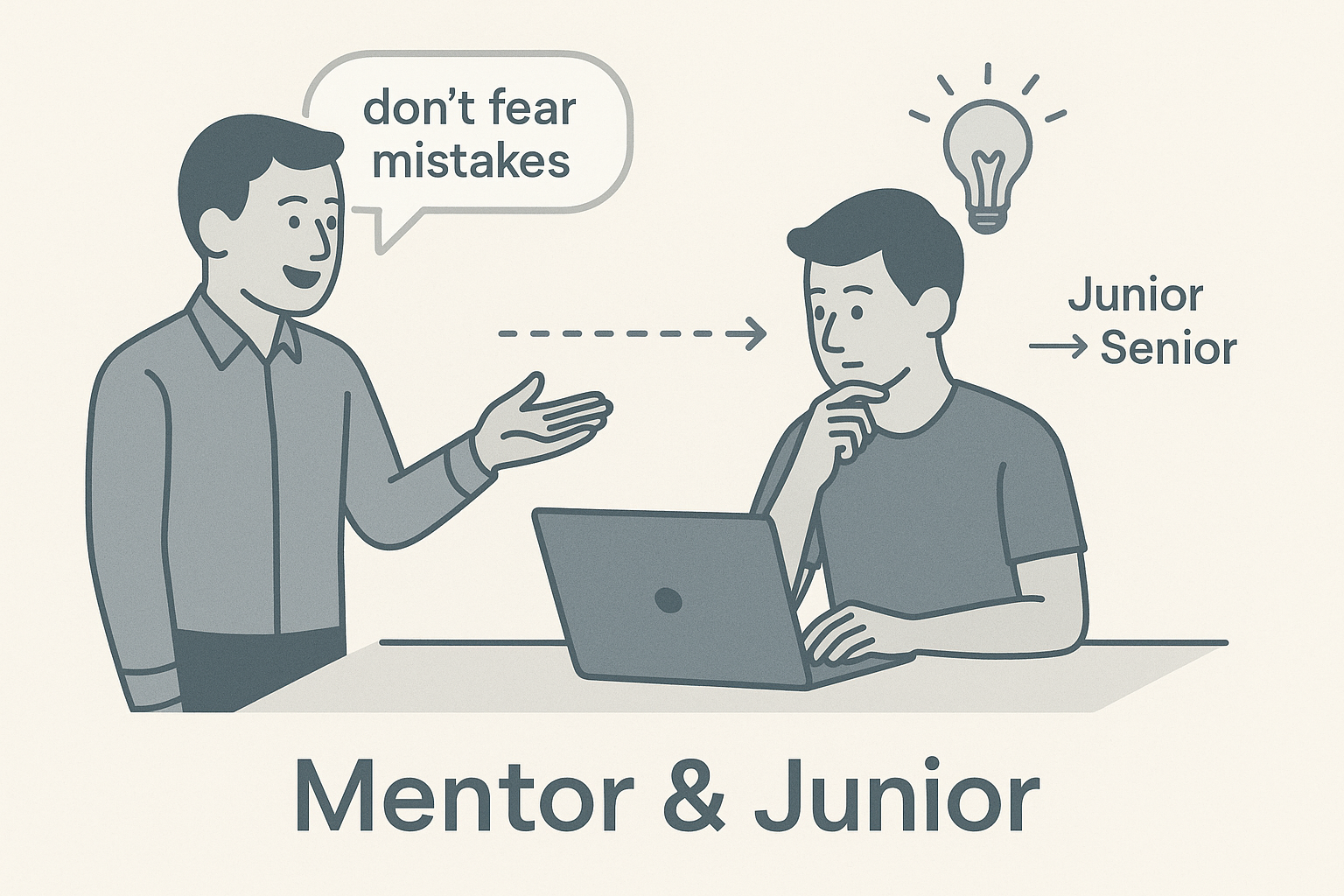2025-05-15
Let Them Trip First: My Approach to Mentoring Junior Developers

Let Them Trip First: My Approach to Mentoring Junior Developers
“This task is foryouto learn—don’t be afraid to break things.
Just make sure you fix what you break and tell us what you learned.”
That single sentence has guided every assignment I hand to junior developers.
Below is my light-weight mentoring playbook—born while supervising a small university lab team—designed to turn nervous newcomers into confident contributors.
1 · The backdrop
When senior members graduated, I inherited a handful of juniors and a stack of campus apps to keep alive. The expectation was clear:
Maintain the software, and grow the next wave of maintainers.
Delivery mattered, but learning velocity mattered more—because a skilled team pays dividends long after any single feature ships.
2 · Golden rule
Mistakes are the best teacher.
Let juniors stumble safely, then discuss what went wrong.
I remind them early: software engineering (outside aviation or medical devices) rarely explodes on a single typo. Bugs are reversible; ignorance is costlier.
3 · Designing the “right-sized” task
| Level-up objective | Typical task I assign |
|---|---|
| First pull request | Tweak a small UI copy or config flag. |
| Understanding codebase | Fix a low-risk bug the team already reproduced. |
| Owning a feature | Add a minor endpoint or form field, write tests, update docs. |
I avoid “invented” tasks—real tickets resonate better.
My rule of thumb: They should finish 80 % solo and hit a wall on the last 20 %. That tension sparks the best questions.
4 · Knowing when to step in
- Observe silently while they Google, skim docs, or rubber-duck.
- Jump in once they ask for help or spin in circles for ~30 min.
- Guide with questions (“What does the stack trace say?”) rather than handing over code.
No micro-management, just a gentle guardrail.
5 · Tools & references before “ask mentor”
- Internet search — first stop.
- Official docs — language, framework, or API site.
- AI assistants — optional; great for hints, but not a crutch during early learning.
6 · Keeping fear low
During weekly tech talks I repeat:
“A bug is a data point—not a disaster.”
We review slip-ups openly, tag them with lessons learned, and move on. The atmosphere stays calm, curiosity stays high.
7 · Knowledge transfer routine
- Weekly tech talk — short demos or post-mortems.
- Assigned tasks — every junior owns at least one ticket end-to-end.
- Code reviews — light, conversational comments; praise first, critique next.
The starter project was a real redevelopment I was already leading—perfect soil for hands-on practice.
8 · Measuring success
Success ≠ “feature shipped by any means necessary.”
| Signal I watch | Why it matters |
|---|---|
| Juniors ask thoughtful questions | Shows they dug in before shouting for help. |
| They can explain a bug fix | Reflection beats blind copy-paste. |
| Peer trust | Teammates volunteer these juniors for tasks. |
Features still ship—just not at the cost of growth.
9 · Lessons I learned the hard way
I once patched every bug myself to “save time”.
Result: juniors never saw their own mistakes, progress stalled, and I burnt out.
Now I let them debug, coach only when stuck, and everyone levels up faster—my communication skills included.
10 · Quick tips for new mentors
- Do: Assign real tasks, review together, celebrate small wins.
- Don’t: Solve everything for them—learning happens in the struggle.
Closing thought
Your project isn’t only a backlog; it’s a training ground.
Give juniors space to trip, help them analyze the fall, and you’ll grow both resilient engineers and healthier codebases.
Have your own mentoring tricks? Ping me—always happy to swap stories.